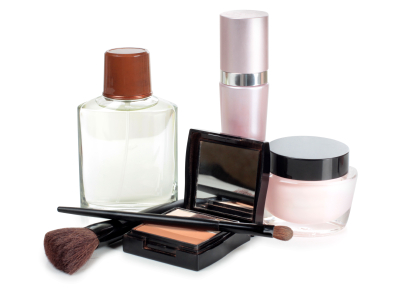3 min read
Getting the Poisons Out of Your Personal Care Products
By: OHI on Mar 21, 2013 12:00:00 AM

Here’s a quick exercise to prove why you need to pay attention to the things you put on your body. Take a clove of garlic, cut it in half, and rub the cut side against the bottom of your bare foot for about four seconds. Within 10 minutes, you will literally taste garlic in your mouth. Think of it this way – anything you put on your skin should be something safe to eat.
Unfortunately, the Food and Drug Administration (FDA) doesn’t quite see it that way. Under FDA regulations enacted back in the 1930s, unless a product contains artificial coloring, cosmetic companies have no legal requirement to either test their products for safety, or even disclose all ingredients on their labels. Even if something in a product is found to be harmful, product recalls are strictly voluntary. That means many of the creams, soaps, toothpastes, shampoos, cosmetics and other personal care products on store shelves contain toxic chemicals.
In an effort to help you make educated choices when you’re buying personal care products, Optimum Health Institute (OHI) has created a list of some of the most commonly used synthetic chemicals to avoid:
Triclosan is an antibacterial, antifungal chemical first used in hospitals as a surgical scrub in the early 1970s. This pesticide is now found in a wide range of consumer products including soaps, deodorants, cosmetics, cleansing lotions, toothpaste, plastics, and fabrics. It has been linked to skin irritation, liver toxicity and thyroid disruption. Triclosan is not effectively filtered out during wastewater treatment, and is being identified as a growing danger to the ecosystem in our lakes and rivers.
Phthalates are used as a plasticizer in some nail care products, and are also widely used as fixatives to hold fragrance. They are linked to endocrine disruption and reproductive toxicants. This chemical is already banned in Europe.
Formaldehyde is a carcinogen released by a number of cosmetic preservatives used in nail treatment, hair color and hair bleaching products. Look for DMDM hydantoin, diazolidinyl urea, imidazolidinyl urea, methenamine and quarternium-15.
Lead acetate is used in hair dyes . It is a known human reproductive and respiratory toxicant, a neurotoxin and a possible carcinogen.
Butylated hydroxytoluene (BHT) is used as a fragrance ingredient to mask undesirable odors. Besides bring a possible carcinogen and endocrine disruptor, it is also harmful to fish and other wildlife when it leeches into the lakes and rivers.
Sodium lauryl/laureth sulfate is used as a foaming agent and is a possible carcinogen.
Diethanolamine (DEA), Triethanolamine (TEA) are also foaming agents, and can cause allergic reactions, eye irritation, and dryness of the hair and skin. DEA and TEA are toxic if absorbed into the body over a long period of time, ?and are associated with cancer in lab animals.
Parabens (Methyl, Propyl, Butyl and Ethyl) are antibacterial and antifungal, and are widely used as preservatives in personal care products. They are suspected endocrine disrupters that may hurt male reproductive functions. They can cause allergic reactions and skin rashes, and have been found in human breast cancer tumors,
When your body, mind, and spirit are aligned, you can achieve good health. If you are looking for a holistic healing program to help you learn what to put on your body, and in it, visit Optimum Health Institute in San Diego or Austin. We can help you achieve your mental, physical, emotional and spiritual goals for optimal health in 2013. Call us at (800) 993-4325 to make your reservation.


